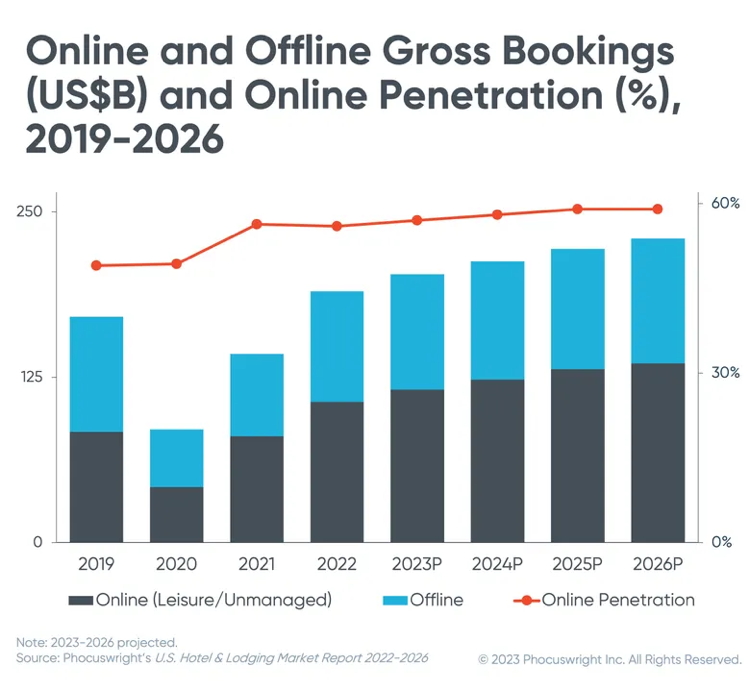
2 minute read
PhocusWire
The U.S. hotel and lodging market did not just recover in 2022, it prospered. High demand lifted average daily rates (ADR) and occupancy, leading to a record-breaking year as room revenue swept past pre-pandemic highs. According to the Phocuswright latest travel research report U.S. Hotel Market Report 2022-2026, the segment exhibited 33% year-over-year growth in gross bookings and surpassed 2019 totals handily. Nevertheless, staffing issues and economic concerns continue plaguing the sector and will pose further challenges in the short-to-medium term.

The report provides a comprehensive view of the U.S. hotel & lodging segment, including detailed market sizing and projections through 2026, distribution trends, key developments and more.
Hotels still face many challenges, including the ongoing talent shortage and the slow return of large business meetings and events – the bread and butter for many urban properties. However, leisure travelers, especially those taking drive vacations or traveling domestically, and trends in remote work, continue to fuel growth.
Looking ahead, here are 4 key areas of focus from the research:
Strong outlook, despite rising rentals
Hotels’ remarkable comeback in 2021-22 is even more impressive considering the rising competition from short-term rentals. Travelers choose rentals for unique experiences, longer-term stays, value or extra room and amenities for larger groups. The competition to hotels is real, but hotels have responded in many ways, including adding more perks for loyalty members.
Labor issues to abate, but not disappear
The hospitality industry still faces a significant labor shortage, although there has been improvement over the past several months. In 2022, two years after laying off thousands of workers, the sector was forced to operate with 1 million fewer employees than before the pandemic, according to the U.S. Bureau of Labor Statistics.
Business and leisure blend; meetings return
Hotels received a wonderful gift in 2022 – the return of business meetings and events. However, they’re seeing different behaviors and shifts in occupancy toward the long weekends versus mid-week. How well hotels can exploit trends including blended trips and digital nomads will determine much about their prospects ahead.
The loyalty wars
Ever since hotels began offering lower rates to loyalty members about six years ago, they have successfully built a solid base of online direct users. But online travel agencies have gone full throttle on their loyalty programs as well, resulting in increased direct bookings on their websites and apps in the hopes of lessening their dependence on Google.
The U.S. Hotel Market Report 2022-2026 is available here.
